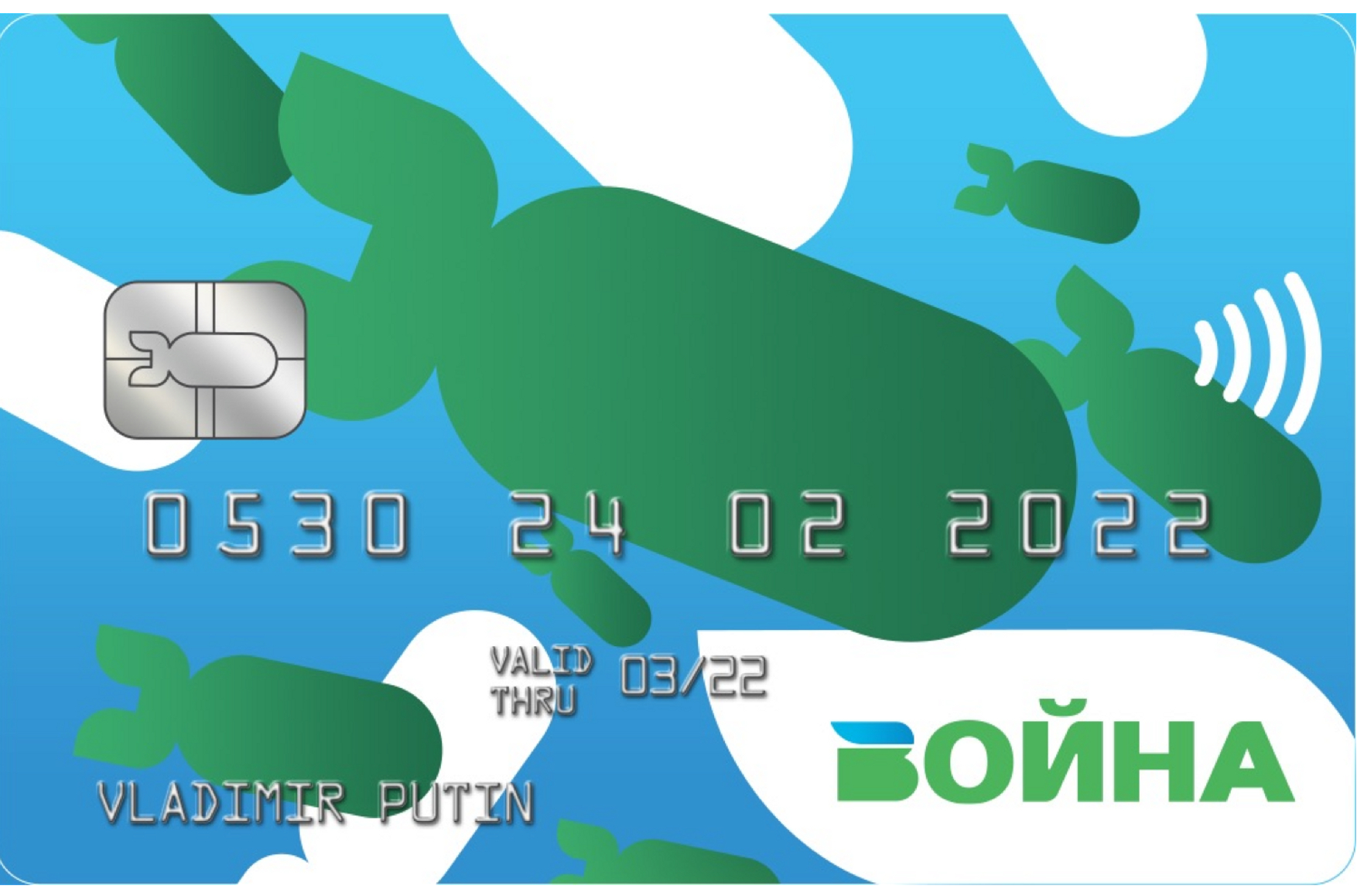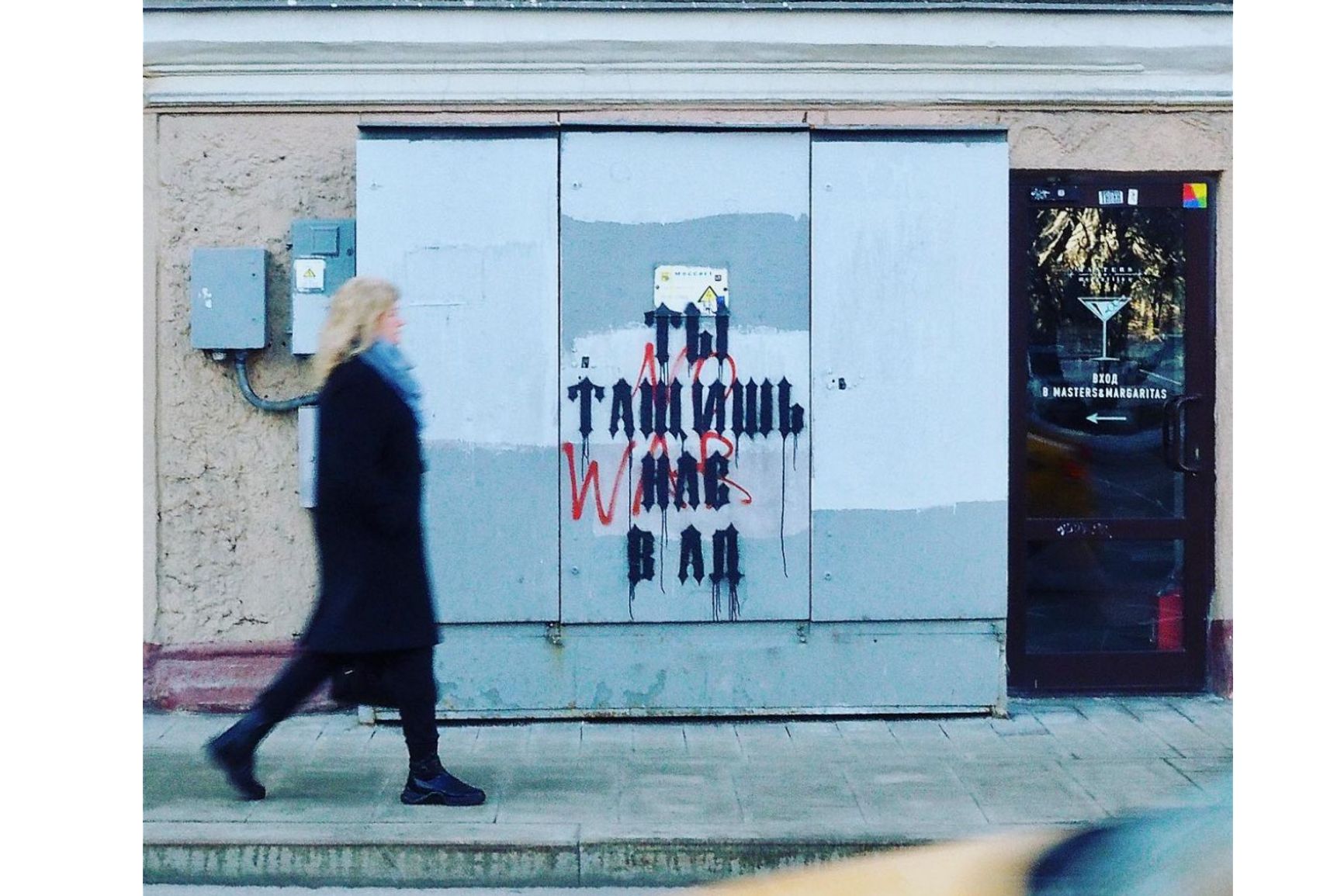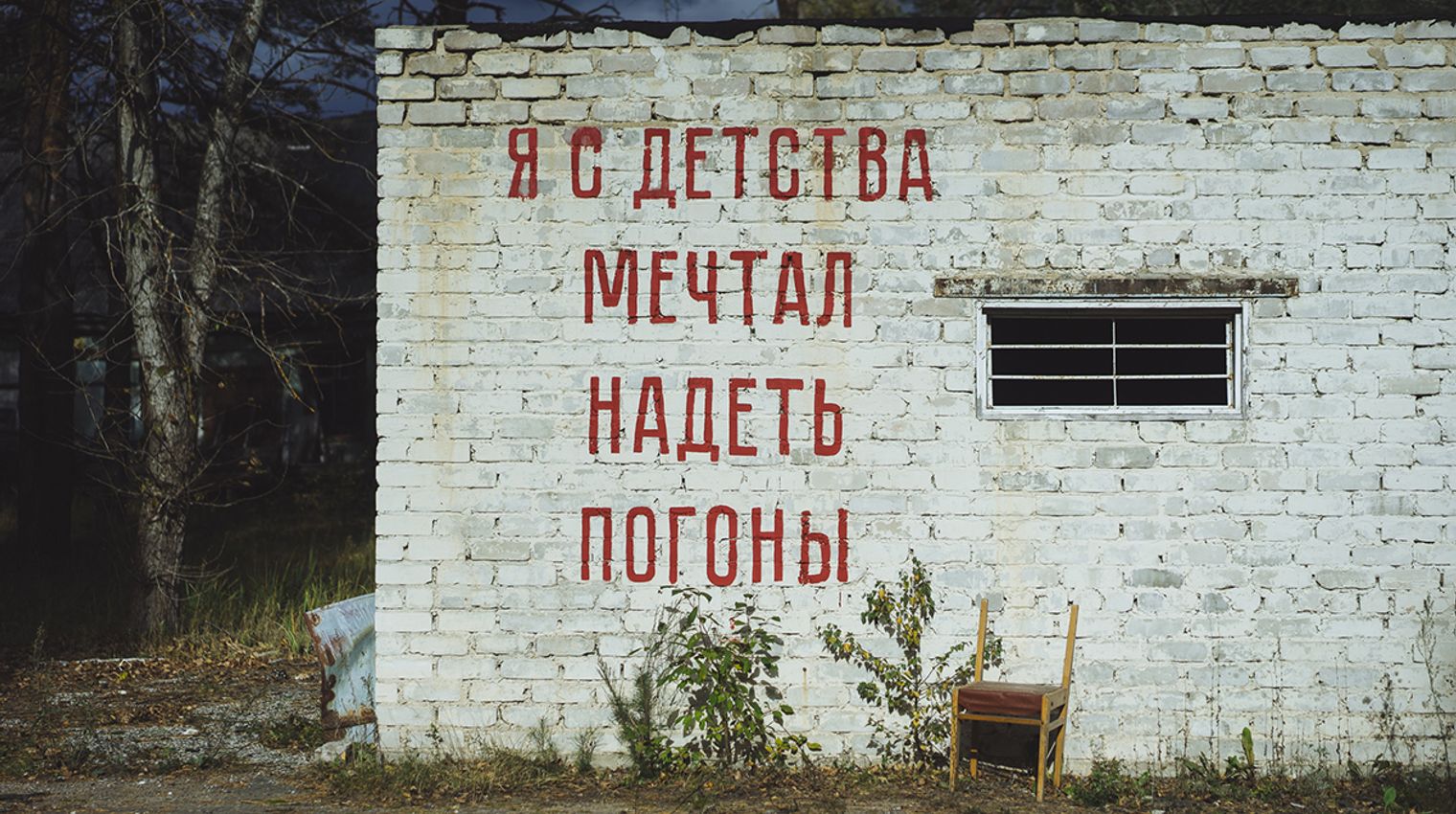

From the first day of Russia's invasion of Ukraine, anti-war protests flared up in Russia’s streets and squares. Thousands of protesters have been detained or arrested. Graffiti artists and performance artists have also been vocal in their vehement condemnation of the war, using all available platforms and surfaces to deliver their message. Mikhail Oger, a producer and curator specializing in street culture and contemporary theater, has put together a collection of the most memorable projects, performances, and pieces especially for The Insider.
Today, the streets of Russian cities are also, in a way, a battlefield. While Ukrainians are fighting their enemy with firearms, Russian cities denounce the aggressor's acts on house walls and fences, in stairwells and courtyards. Fearless activists who are marching the streets in protest have found strong support among street artists. The community of street art and graffiti has propelled itself to the forefront of the anti-war struggle. The range of tactics is vast, varying from simple stickers and tags to elaborate stencils, conceptual street-art masterpieces, classic graffiti fonts, installations, and performative interventions.
Many of the artists with a strong political stance, who weren't hesitant to speak up before the war either, already have a following: Tima Radya, Kirill Kto, Slava PTRK, Philippenzo, Zoom, Blue Pencil, the Yav Art Group, Artem Loskutov, Make/Partizaning, a few performance artists from Pussy Riot (most of whom have been squeezed out of the country), and a handful of anonymous authors.
One of the best-known artists, Pokras Lampas, had stayed out of politics until recently, but with some half a million followers all over the world, his latest piece was a meaningful statement.

Pokras Lampas. An Instagram post
Philippenzo, one of the boldest and most unique artists in the community, painted over his work “Youth is now”, replacing it with “War is now”, and created a piece titled Gruz 200 (Cargo 200, a Soviet military code for the transportation of deceased soldiers’ bodies).
“War is now.”
“Youth is now.”
“Cargo 200”
“Cargo 200”
Blue Pencil has chosen text as his medium.
“He will die too.”
“War will hit everyone.”
“No more war!”
“This one will stay forever, unless we remove him.”
“Whether you like it or not, grin and bear it, my federation.” (A misquote of Vladimir Putin’s gleeful words about Ukraine)
“Thou shalt not kill right now.”
“Zmert.” The Russian for “death” (smert’) with the letter Z, used by Russian troops as their emblem.
“Power lies in truth*. (Footnote:*Prohibited in the Russian Federation)”

“You’re dragging us down to hell.”
SK. An installation in the snow outside the Kremlin.
“No to war.”
“No to war.”

Anonymous feminist artists (Moscow).
"Peace. Let only menstrual blood flow!"
"Russia is an aggressor."
“F*** war!”
Saint Petersburg-based Yav Art Group, which is known for its projects at the confluence of street art and AR, created a conceptual piece, continuing Ilya Kabakov’s “chart of fear and hope” from its latest original mark, 1983.

The number of anonymous posters, stickers, and tags grows by the day. These messages go beyond the constraints of street art and graffiti, with many of them distributed through anonymous channels as layouts and printed all over the country.
“Bombs for Ukrainians. Batons for Russians. That’s all Putin’s regime has to offer.”
“No to war.”
“No to war.”
Bank card VOYNA (“war”), a reference to MIR (“peace”), the Russian national payment system.
“No to war.”
“No to war.”
“Due to low demand and lack of prospects for growth, common sense is hastily leaving Russia.”
“Putin, go away.”
“Theorems bearing the names of Russian mathematicians will be renamed.”
“Lines at IKEA are Russia’s disgrace!”
“Dogs missing. Ruble and Economy. Last seen on February 24, when Putin invaded Ukraine. Without them, you get poverty, unemployment, soaring prices, shortages of drugs, electronics, food, and manifold increases of interest rates. Tell your deputy you don’t need war. Ask them to oppose it. Reward guaranteed! Please spread the word.” “Dog missing. Answers to the name of ‘Peace’. Last seen on February 23. Putin took him away when his troops invaded Ukraine. You can bring Peace back home. Looking for Peace: March 6, 15:00, city center. Sign the petitions to stop the war and impeach Vladimir Putin. Reward guaranteed! Please spread the word.”
“March 8. Happy International Women’s Day! Happy War Day!”
“A Life for the Tsar…?!” (A reference to Mikhail Glinka’s opera about the Polish invasion of 1613)
“No to war.”
“Your son / father-in-law / father / son-in-law / FIANCÉ / brother is HERE. No to silence. No to war.”
More and more anti-war messages appear in Russian streets. Utility crews paint over them, while the police raid homes and schools to hunt down and intimidate those who get caught on security cameras or are identified on the Internet. Apart from fines, new risks for Russian artists include administrative arrests and even criminal prosecution.

“No to war.” (painted over)
![“Vova [Putin], f*** you and your war!” (painted over)](/images/jlyBajoaMI9rxLEjtxNomLcce9WLQ65eXGV1gbcFTGw/rs:fit:866:0:0:0/dpr:2/q:80/bG9jYWw6L3B1Ymxp/Yy9zdG9yYWdlL2Nv/bnRlbnRfYmxvY2sv/aW1hZ2UvNDkwMi9m/aWxlLTdmZDE0N2Ew/YzE0NzZhNDJiYTFl/MmI5NjM5MDVhYmI1/LmpwZWc.jpg)
“Vova [Putin], f*** you and your war!” (painted over)
In graffiti that reads “Huy voyne” (“F*** war”), “war” is the swear word these days.

While the war caught some of us off guard, many artists had already been prophetic in their vision of the future eight years ago, when Russia annexed Crimea and invaded Donbas.
Make / Partizaning: Both Scary and Fun – a series of billboard interventions, Moscow, 2014.

“War. What is it? Tell your kids. Don’t you care?”
In the summer of 2014, street artist Make went on a cycling tour from Moscow to Amsterdam, transforming his bike into a toy tank. The idea was to demonstrate the absurdity of the Russian president’s imperial ambitions with the Partizaning art group's signature irony. However, his performance seems lacking in absurdity eight years later.


A presentation of the event is available here: Occupy Europe.
In 2018, art activist Katrin Nenasheva staged a performance titled Gruz 300 (Cargo 300) to raise awareness of torture in the self-proclaimed People’s Republic of Donetsk. The artist is now serving a 15-day arrest for participation in another anti-war protest.


In 2019, street artist Slava PTRK and the Samoe Bolshoe Prostoe Chislo (SBPCh) indie band collaborated on a dedication to the first and second Chechen wars and those who witnessed the two conflicts and participated in them. Titled 1999, the project brought together eyewitnesses’ and combatants’ memories in a total installation at an abandoned military facility outside Moscow. The facility was also the setting for SBPCh’s 1999 music video.

-----------------------------------------
PS. While this piece was being written, artists of the @post_tribe studio launched a meta exhibition of anti-war works in Moscow's Red Square, recreating it in a metaverse. The exhibition space is accessible via Spatial, a metaverse analog of Instagram. The meta-version of the Red Square can bring together an unlimited number of virtual visitors, encouraging them to discuss any topics without censorship or the risk of being arrested.